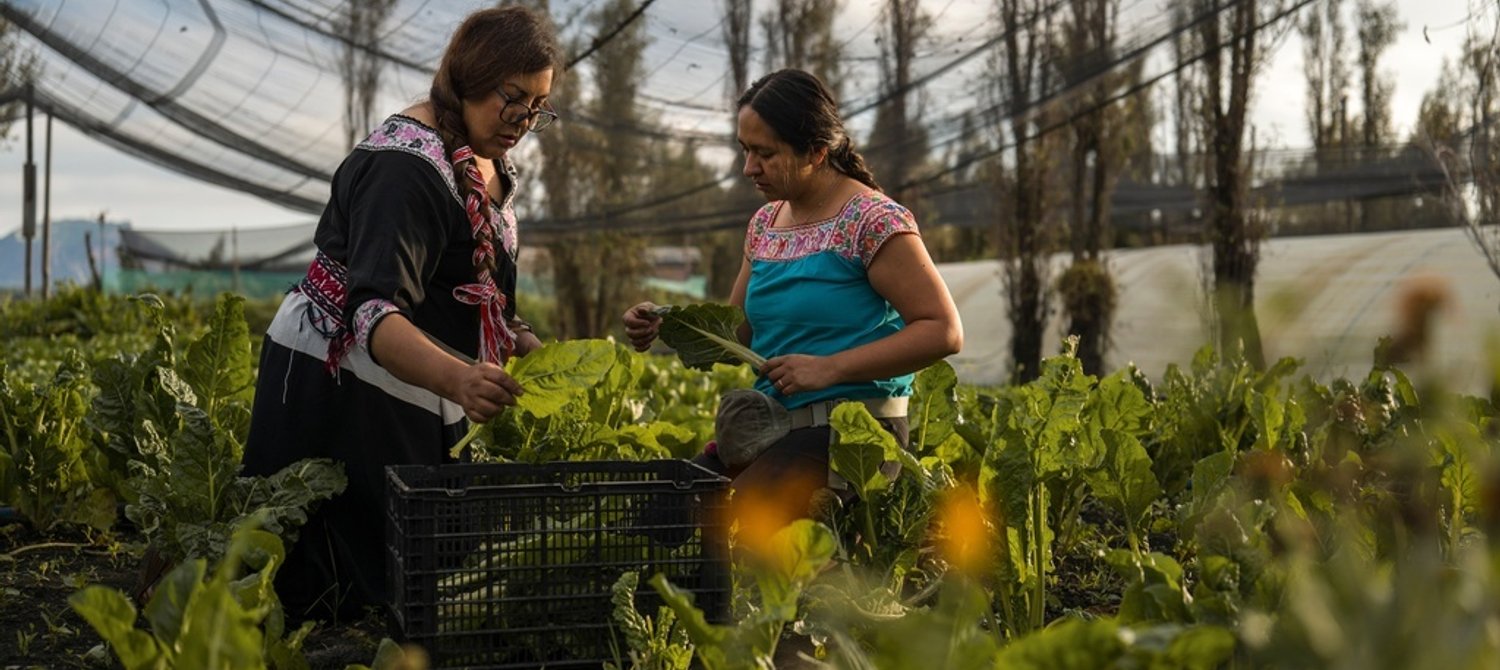Report on the Advancement of Regenerative Agriculture in Brazil and its Alignment with Sustainable Development Goals
Executive Summary
Brazil is positioned to significantly expand its adoption of regenerative agriculture, a methodology crucial for achieving multiple Sustainable Development Goals (SDGs). This approach, which focuses on restoring soil health and ecosystem functions, directly supports global targets for climate action, biodiversity, and sustainable food production. However, scaling these practices requires overcoming significant barriers, primarily through enhanced access to credit and technical assistance. A multi-stakeholder, cooperative approach is identified as essential for a successful transition, aligning with SDG 17 (Partnerships for the Goals).
The Role of Regenerative Agriculture in Advancing the SDGs
The transition to regenerative agriculture is a strategic pathway for Brazil to meet its commitments under the 2030 Agenda. The practice is built on four key pillars, each contributing to specific SDGs:
- Soil Health
- Integrated and Diversified Systems
- Protection of Native Vegetation
- Social Inclusion
Environmental Impact: Climate Action and Life on Land (SDG 13, SDG 15)
Regenerative agriculture is fundamental to environmental stewardship. By prioritizing soil health through practices like no-till farming, it enhances carbon sequestration, turning agricultural land into a carbon sink. This directly contributes to SDG 13 (Climate Action) by mitigating greenhouse gas emissions. As noted by Alex Carreteiro of PepsiCo, this makes agriculture central to combating climate change. Furthermore, the model promotes biodiversity, integrated pest management, and rational water use, which are critical for protecting and restoring terrestrial ecosystems, in line with SDG 15 (Life on Land) and SDG 6 (Clean Water and Sanitation).
Food Security and Sustainable Production (SDG 2, SDG 12)
By improving management and resource use, regenerative agriculture “raises the bar” for sustainability in food production, as stated by Marina Piatto of Imaflora. This continuous improvement ensures the long-term viability and resilience of food systems, which is essential for achieving SDG 2 (Zero Hunger). The principles of regenerative farming promote a transformative shift towards sustainable consumption and production patterns, a core objective of SDG 12 (Responsible Consumption and Production).
Socio-Economic Dimensions: Inclusivity and Economic Growth (SDG 1, SDG 8, SDG 10)
The benefits of regenerative agriculture extend beyond environmental gains. Ludmila Rattis of Ipam highlights the connection between environmental improvements and social well-being, noting that the adoption of biological inputs improves community quality of life. This focus on social inclusion and well-being supports SDG 1 (No Poverty), SDG 8 (Decent Work and Economic Growth), and SDG 10 (Reduced Inequalities) by creating more resilient and equitable rural economies.
Challenges and Barriers to Implementation
Despite its potential, the widespread adoption of regenerative agriculture faces several obstacles that hinder progress towards the SDGs. According to Professor Kadigia Faccin, farmers are often ready to transition but are constrained by systemic challenges. Key barriers include:
- A lack of accessible technical guidance and assistance.
- Insufficient financial support and credit mechanisms tailored for sustainable practices.
- Hesitancy to abandon traditional, established farming methods.
- The difficulty in finding solutions customized to the unique needs of each property.
- The absence of standardized metrics to measure and verify the benefits of regenerative practices, which complicates financing and policy support.
Strategic Recommendations and a Collaborative Path Forward (SDG 17)
Overcoming these barriers requires a concerted effort from farmers, agribusiness, researchers, and policymakers, embodying the spirit of SDG 17 (Partnerships for the Goals). Experts at the Regenerative Agriculture Summit proposed several key actions:
- Enhance Financial Mechanisms: Develop and align financial instruments, such as the Harvest Plan, to better support the transition, particularly for small-scale farmers.
- Strengthen Policy Frameworks: Build upon existing policies like the ABC Plan (Renovagro) to create a robust and supportive regulatory environment for low-carbon agriculture.
- Provide Technical Assistance: Scale up access to technical support and knowledge-sharing platforms to guide farmers through the transition process.
- Recognize and Incentivize Early Adopters: Create programs that acknowledge and support farmers already implementing sustainable practices, encouraging them to advance further, as suggested by Alessandra Fajardo of CEBDS.
By implementing these strategies, Brazil can leverage its “consolidated advantages” to lead a global transition towards a regenerative model that ensures productivity, resilience, and profitability while making substantial contributions to the Sustainable Development Goals.
Analysis of Sustainable Development Goals in the Article
1. Which SDGs are addressed or connected to the issues highlighted in the article?
- SDG 2: Zero Hunger – The article’s core theme is regenerative agriculture, a set of practices aimed at creating sustainable and resilient food production systems, which is central to achieving food security.
- SDG 13: Climate Action – The text explicitly links regenerative agriculture to combating climate change through practices like carbon sequestration, mitigating emissions, and achieving net-zero carbon goals.
- SDG 15: Life on Land – The article emphasizes practices that preserve and restore terrestrial ecosystems, such as improving soil health, protecting native vegetation, and enhancing biodiversity.
- SDG 17: Partnerships for the Goals – The article highlights the need for collaboration among farmers, researchers, policymakers, and the private sector to scale up regenerative agriculture. It also points to the necessity of financial and technical support.
2. What specific targets under those SDGs can be identified based on the article’s content?
- Target 2.4: By 2030, ensure sustainable food production systems and implement resilient agricultural practices that increase productivity and production, that help maintain ecosystems, that strengthen capacity for adaptation to climate change, extreme weather, drought, flooding and other disasters and that progressively improve land and soil quality.
- Explanation: The article is centered on “regenerative agriculture,” described as a set of practices aimed at “preserving and restoring soil health,” using “no-till farming,” and improving “resource use.” This directly aligns with implementing resilient and sustainable agricultural practices to improve soil quality.
- Target 13.2: Integrate climate change measures into national policies, strategies and planning.
- Explanation: The article mentions the “ABC Plan—a public policy promoting low-carbon agriculture, now called Renovagro” as a “Brazilian gem.” This is a direct example of integrating climate change mitigation strategies into national agricultural policy. The goal of making soil a “CO₂ sink” to combat climate change also supports this target.
- Target 15.3: By 2030, combat desertification, restore degraded land and soil, including land affected by desertification, drought and floods, and strive to achieve a land degradation-neutral world.
- Explanation: The fundamental goal of regenerative agriculture, as stated in the article, is to “preserve and restore soil health.” Practices like “no-till farming” are highlighted as methods to achieve this, directly contributing to the restoration of land and soil.
- Target 17.17: Encourage and promote effective public, public-private and civil society partnerships, building on the experience and resourcing strategies of partnerships.
- Explanation: The article emphasizes that building a regenerative system involves “collaboration at multiple levels” and is a “cooperative approach.” The “Regenerative Agriculture Summit” itself, bringing together “farmers, agribusiness representatives, researchers, and policymakers,” exemplifies the multi-stakeholder partnerships needed to achieve this goal.
3. Are there any indicators mentioned or implied in the article that can be used to measure progress towards the identified targets?
The article explicitly states that a “lack of metrics to evaluate different aspects of good agricultural practices” and the “absence of reliable, recognized data” are major barriers. However, it implies several potential indicators that could be used to measure progress:
- Indicator for Soil Health (Target 15.3): While no specific metric is named, the focus on “soil health” implies the need for indicators measuring soil organic matter, carbon content, and nutrient levels to track restoration progress.
- Indicator for Climate Action (Target 13.2): The article mentions “carbon sequestration” and the soil becoming a “CO₂ sink.” This implies an indicator related to the amount of CO₂ sequestered per hectare of land under regenerative management, contributing to “net-zero carbon emissions.”
- Indicator for Sustainable Practices Adoption (Target 2.4): The discussion about farmers needing to “cross the bridge” toward sustainable practices suggests an indicator measuring the proportion of agricultural land or the number of farmers adopting regenerative techniques like “no-till farming” or using “biological inputs.”
- Indicator for Financial Support (Target 17.17): The article identifies “access to credit” and “financial support” as essential. An implied indicator would be the volume of public and private financing, such as through the “Harvest Plan,” allocated to farmers transitioning to or practicing regenerative agriculture.
- Indicator for Social Impact: The mention of “social inclusion” and improvements in “community well-being” from using biological inputs suggests the need for social indicators to measure the quality-of-life improvements associated with these agricultural practices.
4. Summary Table of SDGs, Targets, and Indicators
| SDGs | Targets | Indicators (Implied from the Article) |
|---|---|---|
| SDG 2: Zero Hunger | 2.4: Ensure sustainable food production systems and implement resilient agricultural practices. | Proportion of agricultural area under productive and sustainable agriculture (e.g., number of farms adopting regenerative practices). |
| SDG 13: Climate Action | 13.2: Integrate climate change measures into national policies, strategies and planning. | Amount of CO₂ sequestered in soil; progress of policies like the ABC Plan/Renovagro. |
| SDG 15: Life on Land | 15.3: Combat desertification, restore degraded land and soil. | Metrics for soil health (e.g., soil organic carbon); area of land where biodiversity and native vegetation are protected. |
| SDG 17: Partnerships for the Goals | 17.17: Encourage and promote effective public, public-private and civil society partnerships. | Volume of financial resources (credit, investment) directed to regenerative agriculture; number of multi-stakeholder collaborations. |
Source: valorinternational.globo.com

:strip_icc()/i.s3.glbimg.com/v1/AUTH_37554604729d4b2f9f3eb9ad8a691345/internal_photos/bs/2025/4/o/umMCNSRsSsS3QfGVIoFQ/agricultura-regenerativa-ganha-forca-no-pais-patrick-cruz-valor.jpg)





